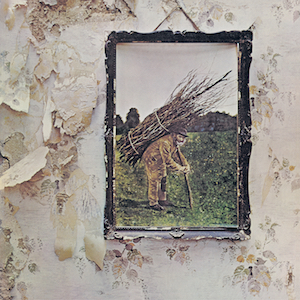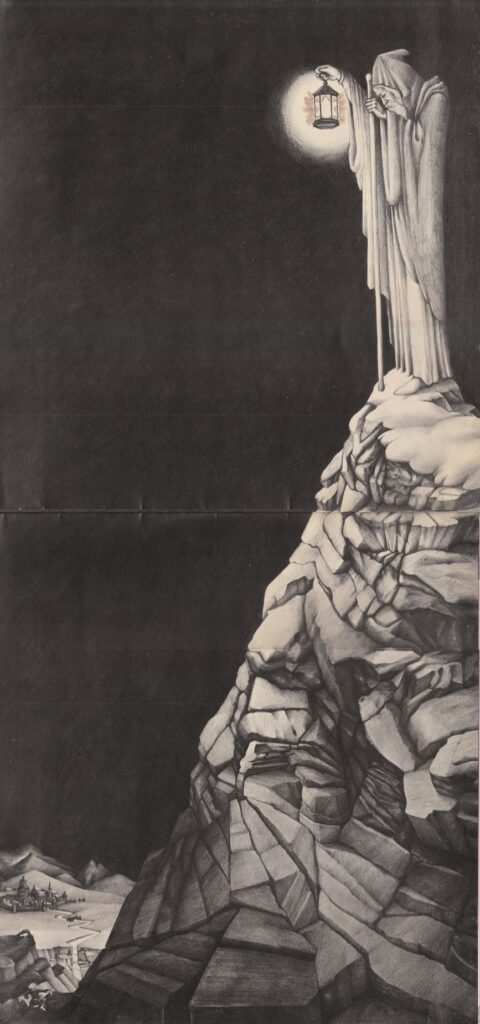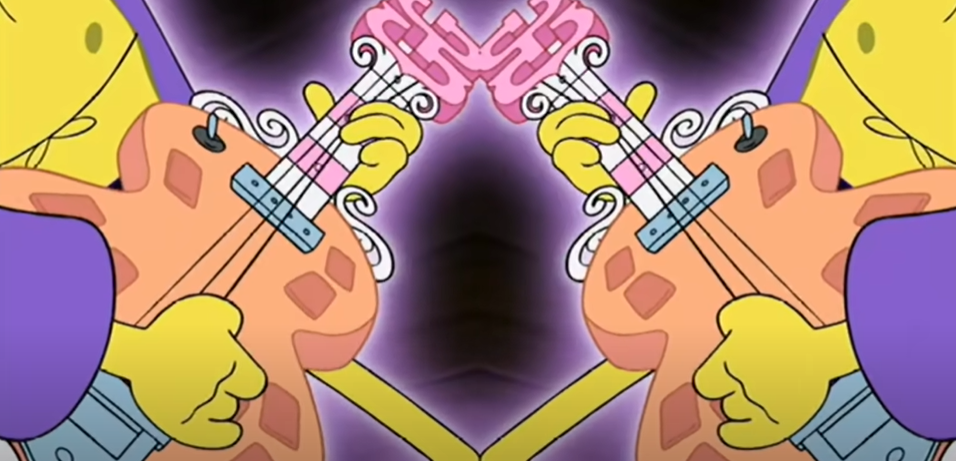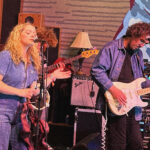Bump what you heard, “Stairway to Heaven” still kicks ass.
The song’s reputation precedes it. The first time I ever heard of it, for instance, was on The Suite Life on Deck (which does, in fact, deserve the official italics). I don’t remember the context, but Cody and Woody were walking back to their room and Woody remarked that he could fart “Stairway to Heaven,” which abhorred Cody, who stated, “that’s like a ten-minute song.” Woody nodded confidently (classic Woody), but it got me thinking: “Oh yeah, I heard a’ that! It must be a classical song, cuz ten minutes is ridiculous!”
Oh, sweet summer child.
I had only ever heard of “Stairway to Heaven” as a supposed masterpiece and something you shouldn’t talk about in guitar stores, but I never actually heard the song. My junior year of high school, when I first perused the tomes of rock music, was my first trasncendent listen to Stairway. I think there’s lots to say about the deftness with which Zeppelin handled the sparseness of the song, but the meaning of the song has always been much more contentious.
Many say that the mystery therein is what makes it so great, and Robert Plant himself has even stated that it “means something different to [him] every time.” The mysticism of the music adds importance to the lyrics, yet they’ve proven to be a tough nut for anyone to definitively crack. There’s a quality to the song that defies standard interpretation.
But that’s complete malarkey, frankly; since day one, dude, I’ve had a concrete interpretation of what this song means. So much so that that one Polyphonic video cheesed me off because of how much I thought he got it wrong (but I still love you, Noah; mwah). So here’s an essay about a song that came out fifty years ago.

Structurally, the song is notable in that it has no chorus since it’s just a constant build. It’s instead composed of four verses, with each of the first three divided in half by little instrumental sections and various mystic vocalizations. I’ve concluded that the verses are where they are because each of the four sits over a different, distinct musical section. I state this because I’ve noticed some differences in how various sources divvy up the song. On that note, my goal is to interpret the lyrics so I’ll largely ignore the sonic elements unless they are relevant to my analysis.
The song opens with that iconic Fairport Convention stuff, and once the guitar and recorders go through their first full cycle of the chord progression, Plant comes in:
There’s a lady who’s sure all that glitters is gold
And she’s buying a stairway to heaven.
When she gets there she knows, if the stores are all closed
With a word she can get what she came for.
Ooh, ooh, and she’s buying a stairway to heaven.
There’s a sign on the wall but she wants to be sure
‘Cause you know sometimes words have two meanings.
In a tree by the brook, there’s a songbird who sings,
Sometimes all of our thoughts are misgiven.
The first verse spends its time introducing our main character: the lady. She’s characterized as someone who believes that salvation is found in money, and that she can buy whatever she wants. The first half of the verse oozes hubris, making her out to be someone who is actively pursuing (presently “buying” the stairway) a path to heaven with what she believes is a morally good way to do so. The second half of the verse furthers her egotism, yet undercuts it as well: a “sign on the wall” is a common trope to denote something as obvious, yet she reads it again, hoping to find something else in it. Here, she is both arrogant and unsure of herself: she wishes to find a second meaning, hoping to justify her way of attaining heaven. By hoping for two meanings, she demonstrates both her self-delusion and her self-awareness.
After this, we get our first mention of nature, a device used by Plant to counter the ideals of the lady throughout the song. The songbird, in its tree by the brook, sings that “our thoughts are misgiven.” This implies that the lady’s salvation may, as she fears, not be founded; her thoughts are misgiven, filled with doubt and apprehension. Then comes the second verse:
Ooh, it makes me wonder,
Ooh, it makes me wonder.
There’s a feeling I get when I look to the west,
And my spirit is crying for leaving.
In my thoughts I have seen rings of smoke through the trees,
And the voices of those who stand looking.
Ooh, it makes me wonder,
Ooh, it really makes me wonder.
And it’s whispered that soon, if we all call the tune,
Then the piper will lead us to reason.
And a new day will dawn for those who stand long,
And the forests will echo with laughter.

The second verse abandons the lady and her plight and begins by looking to the west, a trope that implies progress or a journey. Plant looks west when his “spirit is crying for leaving,” when he feels a wanderlust. In this west, he envisions smoke through the trees and voices from “those who stand looking.” These people parallel Plant, and the smoke must be theirs as they talk among the green. Plant sees to the west, to the future, people like him: wandering souls finding something in nature.
The second half of the verse picks up on this idea where we meet our third character, the piper. The piper supposedly will lead “those who stand long” to reason, should you call his tune. Thus will a new day dawn, and thus will the forests echo with laughter. We can assume that the forests mirror the trees through which Plant envisioned smoke, and thus that the laughter comes from those who stood looking. Those who stood long implies a following of the piper’s teachings; a following to reason, which can be found among the trees.
Third verse:
If there’s a bustle in your hedgerow, don’t be alarmed now,
It’s just a spring clean for the May queen.
Yes, there are two paths you can go by, but in the long run
There’s still time to change the road you’re on.
And it makes me wonder.
Your head is humming and it won’t go, in case you don’t know,
The piper’s calling you to join him,
Dear lady, can you hear the wind blow, and did you know
Your stairway lies on the whispering wind?
This verse begins by affirming this comfortability in nature, for the first time addressing a listener; “you.” Plant assuages this listener’s fears, assuring them that the rustles among the hedgerows are but a natural cycle; specifically of “the May Queen,” an established reference to the fairies of British literature. He continues by telling the listener that, yes, one can choose different paths in life and it isn’t too late to change. The second half of the verse advises the listener that this humming they hear is the piper’s call. All of this information coalesces and is recontextualized when Plant reveals who the listener is, saying “Dear lady,” e.g. the same woman from the beginning of the song.
The hedgerows can now be seen as evidence of her wealth, and the path she’s chosen is of such wealth. Plant, having addressed her fears and reassured her of her capacity for change, assuages her self-doubt from the beginning of the song. This is furthered by Plant telling her about the piper, hoping to sway her into another way of life, the path opposite her bejeweled one. Plant even asks the lady to listen to the wind blow; to seek the piper’s call in nature itself, as it were. The third verse concludes with his thesis: “your stairway lies on the whispering wind.”
Plant, connected to the piper and having learned much of nature, has found the salvation the lady seeks not in wealth, but among the green. Here nature is placed in full opposition to the lady; the path opposite hers in the “two paths you can go by” that Plant mentions. Nature is presented as the true path to salvation, the correct way to achieve such, as reinforced by the lady’s doubts and Plant’s visions.

After this comes the fanfare, stopping the previously uninterrupted momentum of the song to announce the beginning of a new idea. The solo propels us into a much more energetic atmosphere for the fourth and final verse, where Plant detaches himself from the lady and we are given an epilogue to their story:
And as we wind on down the road,
Our shadows taller than our soul,
There walks a lady we all know
Who shines white light and wants to show
How everything still turns to gold.
And if you listen very hard,
The tune will come to you at last,
When all are one and one is all.
To be a rock and not to roll.
Let’s go line by line. “And as we wind on down the road” — the road of life, and a reference to the two paths that Plant mentioned to the lady. “Our shadows taller than our souls” — we all walk with darkness that trumps our virtues, and are thus seeking salvation. “There walks a lady we all know” — the lady that we, as listeners, have become familiar with. “Who shines white light and wants to show” — the lady, a pure, radiant symbol of virtue, now endorses some apparently pristine practice. “How everything still turns to gold” — Ah! And here we are undercut. Instead of preaching Plant’s teachings, she still believes that salvation is achieved through wealth. She has remained unchanged. Her hubris has won out over her doubts and she spouts her beliefs as a truly virtuous creed. But let’s continue:
“And if you listen very hard” — a reference to the piper. “The tune will come to you at last” — further advocacy for the piper, now perhaps addressed at the lady once more, or perhaps the audience. Plant is reminding us that the truth is still out there, despite the lady’s failure to grasp it. “When all are one and one is all” — Here, Plant states that the truth in nature will come to us all when all are one and one is all: when we die. He’s stating that we’ll all eventually know true salvation when we’re confronted with whether or not we’ve taken the steps to get there, as we stand at its door.
Plant concludes the last verse with my favorite line: “To be a rock and not to roll.” This is a reference to the lady. The lyric is derived from the phrase “rolling stone,” which refers to someone who can’t settle down, always changing or moving around. This phrase became popular with blues musicians, often wandering men themselves. It then syncretized with the term “rock and roll,” and the rest is history. Plant flips this concept and equates the lady to a rock who refuses to roll, i.e. someone who won’t change. She has stayed steadfast in her ways, despite her doubts and Plant’s sermons. The line is somewhat disconnected from the rest of the verse, and serves as the last thought that we are given before the instrumental begins rising and building until: “And she’s buying a stairway to heaven.” A confirmation that the lady has remained as she was, pursuing her golden empyrean.

So that’s my big hot take on Stairway: a character piece dealing with competing ideas on how to achieve salvation. I think I’m pretty dead-on because I think a lot of this fits pretty well. I’ve encountered plenty of other interpretations, but I don’t see a lot of coherence in them. Not every element fits nor is every detail accounted for. Now, I’m not Malcolm Gladwell, but I think my version here does a pretty good job of squaring everything away neatly. I mean, your experience with art is subjective but I’d argue that any interpretation has the opportunity to be objective. I don’t know, tweet at me if you disagree.
Lyrics provided by the good people at AZLyrics.com.





